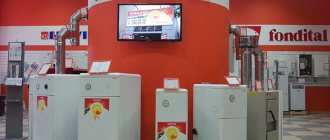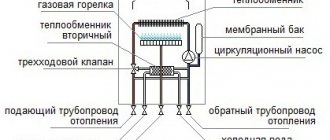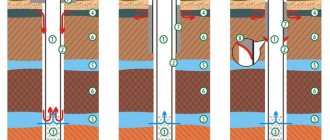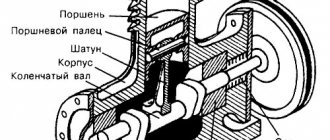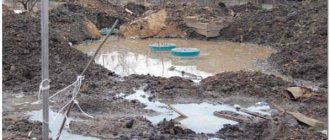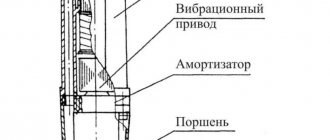As my teacher said: “Any technology is just hardware that can someday fail!” In situations where your motor pump does not pump water, you should find the reasons why this happened.
There can be many reasons, based on the primary signs of abnormal operation of the equipment.
When purchasing such a complex technical device as a motor pump, your instruction manual will probably have a section that lists all possible problems with the operation of the motor pump and how to fix them yourself.
So, you should not immediately take the device to a service workshop, where you should have this equipment repaired.
What can usually happen to your “hybrid” equipment, which consists of 2 interconnected main parts:
- An internal combustion engine with all its structural components.
- The pump part, which is also divided into several important parts.
Moreover, we will not divide motor pumps by their types and types, such as:
- gasoline motor pump or diesel, gas;
- motor pump for dirty water, clean water, for liquid fertilizers, with a large water supply under strong pressure.
Let's combine all this under general problems that can happen with all similar equipment.
Signs of a motor pump malfunction
A motor pump, or water pump, solves the problem of pumping water from open reservoirs.
In this article we will analyze in which cases you can fix a motor pump malfunction with your own hands, and when you should contact a repair shop. The main symptoms of a motor pump failure include:
- engine exhaust gases are black;
- Unstable engine operation at high speeds;
- oil consumption in the motor pump engine is higher than usual;
- there is a leak in the pumping unit;
- pump performance has decreased.
Motor pumps and pumps, like any equipment, can break down or operate intermittently. You can disassemble them yourself for minor repairs or technical inspection.
If the cause of the motor pump malfunction is a breakdown of the engine, it is better to entrust the repair to professionals. If the equipment is under warranty, you must contact the service center.
Where to buy a mechanical or electric water pump
engages in supplies to Russia of coolers, pumps and related equipment designed for bottling water from bottles of various sizes. All equipment is supplied under the “ECOCENTER” brand.
We provide the best price-quality ratio of equipment, and also offer our partners excellent service and flexible terms of cooperation.
You can see the attractiveness of collaboration by comparing our prices with similar equipment from other suppliers.
All our equipment meets the standards established in Russia and has quality certificates. We deliver dispensers to our customers, as well as all the necessary spare parts and components in the shortest possible time.
Thermopot is a modern household appliance for heating water poured into it and keeping it hot. The device is indispensable where you need to gradually consume hot water over a long period of time. But with frequent use, breakdowns are possible (for example, control systems, pumps, etc.). In this article we will look at repairing a thermopot pump with our own hands.
Signs of a faulty vacuum brake booster
Due to prolonged operation of the vacuum brake booster without replacement, defects may appear in it. Most often, the problem manifests itself in mechanical damage to the connection of the hose connecting the amplifier and the engine intake manifold. Mechanical damage or the formation of cracks in the rubber will lead to the fact that a vacuum will not be created in the working chamber of the mechanism, and this is necessary for its proper operation.
Internal parts in the vacuum brake booster can also fail, for example, the valve will lose elasticity or the working surface of the diaphragm will be damaged.
A malfunction of the vacuum brake booster can be determined by the following signs:
- The car began to brake worse with the same pressure on the pedal;
- When you press the brake pedal, you hear hissing sounds, at which point the engine speed may increase;
- The car starts to shake;
- Fuel consumption increases when the machine operates in the previous mode.
In some situations, other problems may arise in the operation of the car due to problems with the vacuum brake booster. For example, spark plugs may stop firing.
Why does the motor pump not suck in water?
Motor pumps are equipment often used in difficult conditions, at extreme operating conditions, for a long time without stopping. Even the most reliable models from well-known manufacturers can fail due to non-compliance with operating rules, careless handling, low-quality fuel, and natural wear and tear of parts.
The motor pump consists of two main units - an engine and a hydraulic pump.
The pump has failed
The biggest problem that can happen to an electric pump is the burnout of the winding, and the device usually cannot be repaired (rewinding the winding with your own hands is difficult, and in a workshop the cost of work and materials will not be comparable to the price of the electric pump).
With this malfunction, the electric pump will hum, but will not be able to pump water.
Sometimes the impeller of borehole and well pumps may break, the check valve system may fail (they will not allow water to pass through) and the piston ring of vibration models may fail.
Violation of the operating rules for submersible pumps, errors in the installation of the water supply system, a sharp increase in water intake and a decrease in the flow rate of a well or borehole can lead to the hum of a working electric pump, in which water will not flow to the consumer. In most cases, you can repair electric pumps yourself if you remove the device to the surface to accurately determine the problem area.
The pump for bottled water does not pump, there is a video.
There are a great many types of water pumps: they can be either manual or electric, for 5 liter bottles and 19. In the event of a breakdown, repairing a water pump will not be difficult if you know the principle of its operation.
A hand-held water pump (Pump) fits tightly onto the neck of the bottle; when you press a button using a plastic corrugation, it pumps air into the container, increasing the air pressure in the bottle and thereby forcing the liquid to rise up through the tubes.
- What to do if the pump stops pumping water?
Where to look for a breakdown and how.
The first thing you need to do is to disassemble the pump; the disassembled pump is shown in the picture above. Inspect the parts for damage; special attention should be paid to the plastic corrugation, since it is usually made from ordinary polyethylene. Check whether the valve petals are in place; with their help, air remains in the bottle when the corrugation opens after pressing the button.
If a valve is torn out, it needs to be put back in place; the valves pop out due to sudden force when pressing the water supply button.
4. If this does not help, check how the pump sits on the neck of the bottle, and whether the o-ring is in its place. There should be no air leakage where the pump fits onto the bottle. Sometimes, when removing the pump from the bottle, the clamp (holder) that holds the pump to the neck is not loosened, and this leads to the rubber seal coming out of place
Such a breakdown is difficult to see with the naked eye. You can pull the edge of the seal; if it comes out freely, it must be put in place and, depending on the model, fixed. To do this, you need to disassemble the holder and put the seal where it is attached.
Recommendations for using the pump:
1. The water bottle should be installed in a cool place (temperature no higher than 20ºC), away from direct sunlight.
2. Install the pump with clean hands
3. Do not touch the pump spout with your hands, and do not drink water directly from the pump spout.
4. It is advisable to wipe the entire pump with a damp cloth each time you change the bottle. Or disassemble the pump and wash it with any dish soap. Rinse with running water at least 30 degrees. Then dry completely on a towel, since a dry environment is detrimental to bacteria.
Read also: Brake system VAZ Kalina diagram
5. When pouring water, make sure that the spout of the tap does not touch the glass.
6. Prevent liquid from being sucked from the glass into the bottle by reverse current (do not lower the tap deep into the glass).
7. It is recommended to sanitize the pump once every 6 months (you can do it yourself). If the pump is used by a large number of people, especially children, then sanitization should be carried out more often (once every 3 months)
Most often, bottles are filled with water from an Abyssinian well. It is supplied cleaned, does not require maintenance, and does not deteriorate. For ease of filling, a special pump is placed on the neck of the container. Pumping the required amount of liquid occurs by touching a button on the device.
The pump is distinguished by its reliability, so it can be transported separately or together with the tank to the country house or outdoors. It must match the size of the tank being used. The range includes models that differ in body color. They allow you to select the device to suit the interior features. Let's take a closer look at how a water pump works.
Replacement and repair of faulty parts
Now that you know how to disassemble a hydraulic machine, you can try to repair a submersible pump yourself.
Basically, blocking of the impellers occurs due to their clogging with sand.
or due to the formation of a coating of dirt on them. In addition, the impellers can be soldered together when a high temperature occurs in the block when the pump is idling (dry running). To repair this section of the unit, it is necessary to remove the impeller(s) and remove accumulated dirt. If the impellers are damaged, they will need to be replaced with new ones.
Engine
It is not recommended to independently repair the pump motor, since diagnosing this unit and subsequent repairs requires special knowledge and the necessary equipment.
In some pump models, removing the motor will require pressing it out using special equipment. Replacing the oil seal and bearing
also carried out at the service center.
If the engine hums and does not start
, then you should check the capacitor. It is located in the pump block in which the motor is installed.
Advice! Before disassembling the engine block, try turning the engine shaft with the pump block disconnected. If the shaft rotates, then the reason may be that the impellers are jammed.
But when the shaft with impellers rotates without problems, then in order to eliminate the hum in the water pump, you should disconnect the capacitor and replace it with a new one. Of course, it is better to check this part with a multimeter
, since similar symptoms can be caused by a short circuit in the motor windings.
The water pump motor is located in a special glass filled with oil, and by its condition it is possible to determine some breakdowns in the electric motor block.
- The oil has a characteristic, unpleasant odor
. This means that the engine is still in working condition, but was working under heavy overloads. - Cloudy oil
- water has entered the engine housing due to a crack in the housing or failure of the oil seal (cuff). - Black oil with an unpleasant odor
. In this case, we can say with great confidence that the varnish was burning on the engine coils.
If, when opening the engine, the above changes in the quality of the oil were noticed, then you first need to repair this unit, and only then fill in new lubricant.
Dispenser repair
Complex appliances that are used in public places can only be repaired by experienced technicians who specialize in these operations.
A broken household mechanical dispenser is quite capable of being dealt with by a home handyman or housewife.
It should be noted that such devices are made of glass, durable plastic, metal (stainless steel). Also, do not forget about the design features of a particular dispenser.
In a simple plastic dispenser, the nozzle and pump tube may become clogged with soap residue.
- First, unscrew the dispenser cap with the nozzle and place it together with the pump tube in a container filled with hot water.
- We leave it all to “soak” for several hours.
- Using a small brush or an unnecessary toothbrush, clean the nozzle from any residual detergent.
- We wash all the components of the dispenser under running warm water.
If you need to clean the outside of the flask, you should take any liquid dishwashing detergent, dilute it in warm water, moisten a sponge with the solution and wipe the walls of the container. After five minutes the composition is washed off.
The glass bulb can be easily cleaned with a mirror and glass cleaner.
Source of the article: https://stroykadekor.ru/kak-otremontirovat-dispenser-dlya-zhidkogo-myila/
What is the phenomenon of cavitation
Everyone knows that some gases
. When a liquid moves at a certain speed, rarefaction zones sometimes form in it. In these areas of low pressure, gas bubbles begin to emerge from the water. Once the bubbles enter the high-pressure zone, they collapse. This process occurs with the release of a large amount of energy, which destroys the impellers and volute of the pump. The following photo shows a unit impeller destroyed by cavitation.
The energy of collapsing bubbles can create shock waves
causing vibration. It spreads throughout the entire unit and affects not only the impeller, but also the bearings, shaft and seals, causing these parts to quickly become unusable.
The cavitation effect can most often be observed in pumping stations that operate on suction
. In such systems, the impeller creates a vacuum, due to which water rises through the hose from the well. But if there is a lack of liquid at the pump inlet, then excessive vacuum occurs in the impeller area, causing cavitation.
To prevent cavitation from occurring in pumps, you should adhere to the following rule: there must be more water at the inlet than at the outlet. This can be achieved in several ways:
- you should move the device a little closer to the source;
- you can increase the diameter of the suction pipe (hose);
- to reduce resistance in the suction section, the suction pipe can be replaced with a pipe made of a smoother material;
- if there are many turns in the suction pipe, then, if possible, their number should be reduced;
- It is desirable that all bends have large turning radii.
Advice! The suction hose of the station should not be lowered into the well to a depth of more than 8 meters. Typically, the maximum immersion depth of the hose (pipe) is indicated in the equipment manual.
Any malfunction of the water supply system at home is the result of an error by the organization or individual involved in its implementation. In this case, the homeowner has a good chance to learn from his mistakes by repairing the electric pump with his own hands and, with a “successful” set of circumstances, improve his health by carrying water manually for some time from the nearest water source.
Rice. 1 Well pump assembled
This sequence of actions applies to all types of pumping equipment, regardless of the location and method of installation. It should be noted that the power supply system of the pump, apart from the wires switched by switches, does not have complex circuits, so if the submersible water pump does not pump water, but starts and hums, problems with the supply of the required supply voltage in the vast majority of cases can be eliminated.
First of all, repair of electric pumps should begin by turning off the supply voltage, removing it from the water intake source and disconnecting the outlet hose.
When reconnecting, the reasons why the pump does not work can be divided into several areas according to the location of the manifestation - we will consider them below.
Rice. 2 Water supply scheme for a private house
How to choose and care for a mechanical bottled water pump
Having decided to purchase a mechanical pump for bottled water for use at home or office, it is important to carefully study the list of models on the market, which will allow you to find the most suitable option in terms of price-quality ratio. We also recommend that you go to specialized forums and read reviews of other buyers about these devices. It would be a good idea to contact a filter and pump specialist for help.
When choosing a mechanical pump that will constantly interact with drinking liquid, first of all you need to pay attention to the quality of the device and, especially, the material of manufacture. It is also worth making sure that the selected model has the right capacity and appropriate parameters for your capacity.
Different models of mechanical pumps have different lengths of water supply tubes, which allows the device to be used for bottles that differ in volume and depth. A properly selected mechanical pump will allow you to empty the bottle without leaving any residue.
On the market, mechanical pumps for bottled water are available in various colors, which can be considered a pleasant addition to all the advantages of this device. Thus, everyone gets the opportunity to choose a pump that will harmoniously fit into the interior of the room where it is planned to be used.
Some modifications provide the ability to close the spout cover, which will help prevent dirt and dust from penetrating inside, and therefore prevent water from spoiling.
It is worth keeping in mind that it is also not recommended to touch the spout with the container into which you are pouring water. Violating this rule may result in damage and contamination of the device.
If you have not used a mechanical water pump for a long time, then before resuming use, you need to disassemble the device and thoroughly rinse each part. Maintenance manipulations must be carried out extremely carefully, since most of the parts are quite fragile and made of plastic.
However, the pump must be flushed even if it is in continuous operation. It is recommended to do this using the following algorithm:
- carefully disassemble the pump into parts;
- Rinse each part well, remembering that you should not squeeze the elements too much. For washing, it is better to use plain water without resorting to cleaning products;
- to remove serious contamination, you need to place the pump in hot water (temperature no more than 60°) for some time (no longer than 15 minutes);
- dry the washed structural elements;
- Reassemble the device in reverse order.
Some manufacturers make it easier for their customers to care for the pump by selling a special cleaning brush included with the device, which allows you to clean the mechanism much faster and better.
If the unit is working but does not pump water
Let's say that no problems are found with the electrical system and the integrity of the hoses, but the water pump still does not pump liquid from the well. To look for an answer to the question of why the device does not pump water remains only in the pumping equipment itself. To do this you can do the following:
- First you need to check the filter device and check valve. They may be clogged and will need to be cleaned. In some cases, it may be necessary to replace these products or one of them with a new element due to complete wear of the old part.
- The second unit to be checked in a BC (domestic centrifugal) pump is protection against “dry running”. The sensor could simply burn out, so the unit began to work in a well without water. This quickly leads to overheating of the electric motor and failure. It is better not to repair such equipment, but to replace it with a new product. This will make it more reliable and safer to operate the unit in the future.
How dispensers work
There are several options for dispensers, differing in operating principles:
- mechanical models. To get a certain amount of soap you need to press a button or lever;
- sensory models. These devices operate on a contactless basis. It is enough to bring your hands to them, the infrared sensor, powered by a battery, will “command” to dispense a dose. This principle is very convenient, since there is no direct skin contact with the dispenser, it does not get dirty, and dirt and bacteria cannot get into the soap. This property is very important for medical institutions and places with high traffic volume of bathroom users.
Such devices also differ in location: tabletop, wall-mounted, built-in.
Nuances of breakdowns depending on the brand of pump
When operating pumps from different manufacturers, it was noticed that some brands of devices often suffer from the same breakdowns. It follows from this that these models of units have their own distinctive features in terms of the occurrence of malfunctions.
Aquarius
Aquarius pumps are prone to overheating
, especially if they work in shallow wells. If a cheap model breaks down, repairing it costs approximately 50% of the cost of a new device. If the device fails, it is easier to throw it away than to repair it.
Grundfos
Most models from this manufacturer have a valve system
. There is also special thermal insulation around the engine. Sometimes pump malfunctions occur due to failure of the listed parts. Since the thermal insulation gasket is located around the motor, it will need to be removed from the housing for repairs.
Baby
“Malysh” devices are products of domestic manufacturers. The cost of repairing units of this brand is not high, and the owners of the devices fix most of the breakdowns themselves. The main failure that often occurs in this pump is the occurrence of loud noise.
when the hydraulic machine operates without pumping out liquid. This behavior of the apparatus means that a rupture has occurred in the central axis holding the anchor and the membrane.
Gilex
The engine in vortex and rotor type pumps “Dzhileks” is oil-filled. Therefore, a frequent breakdown of these units is oil leakage from the engine.
. It can only be topped up at a service center.
Brook
There is an opinion that the operation of the “Rucheek” drainage pumps can continue without stopping for 7 hours or more. This is explained by the peculiarity of their design, which meets all European standards. But despite this, the device is subject to overheating
as well as pumps from other manufacturers. Therefore, it is recommended to give it time to “rest” after every 2-3 hours of operation of the device.
Marquis (Marcus)
Owners of the Marcus well pump sometimes notice that the device turns on only after a slight blow either to the pipe going to it, or after a blow to the hydraulic machine itself. This malfunction is explained by “ souring” of the impeller
, which will have to be cleaned by disassembling the unit.
Selection principle
Considering that such devices are constantly in contact with drinking water, the first thing that is taken into account is the quality of workmanship, in particular, the properties of plastic (namely, these pumps are usually made from this material). It is equally important to choose a model with a performance level and parameters that will correspond to a specific container capacity.
Watch the video, selection criteria:
Different versions of pumps are equipped with a water intake tube of different lengths, which also allows you to dry bottles of certain capacities and depths without leaving a residual amount of liquid at the bottom, as often happens with an incorrectly selected pump.
An additional bonus is the wide range of colors of such devices. If you are selecting a pump for use in domestic conditions, then it is quite possible to select a version of a suitable shade for a specific interior.
Popular models from different manufacturers
Pump model Parus
You can buy a pump for pumping bottled water from containers of different capacities at a very affordable price. For example, a Parus pump costs about 600 rubles. This type of device is designed to work with containers with a capacity of 11 and 19 liters, and is made in a mechanical version.
It is of high quality, which is noticeable in operation: it does not creak, does not require much effort, and is easily installed on the neck of the bottle. A distinctive feature of this design is the button, the lower part of which is made in the form of corrugation, but with walls thick enough to withstand heavy loads.
Pump BIORAYWA 3185
An alternative option is the BIORAYWA 3185 pump, designed for containers whose neck has a diameter of 5.5 cm. This is the main advantage of this model, which expands the scope of use of the device.
Frequent problems with motor pumps and how to fix them
The motor pump engine does not start
Reasons why the motor pump engine does not start:
- there is not enough gasoline in the pump tank;
- oil needs to be added;
- incorrect connection - the motor pump starts only in a horizontal position;
- the fuel valve is closed;
- the carburetor damper is open;
- the carburetor is very dirty;
- oil enters the combustion chamber of the motor pump;
- the air filter is dirty;
- The spark plug is covered in carbon deposits.
As you can see, if the motor pump engine does not start, this problem can in most cases be corrected independently.
The motor pump is unstable
The cause of unstable operation of the motor pump may be a dirty air filter. You can clean or replace the filter yourself.
Malfunction of the pump part of the motor pump - no suction
Reasons for the lack of suction in a motor pump:
- damage to the intake hose;
- pump seal wear;
- insufficient water level in the pump section.
The motor pump began to pump water weakly
Reasons for low motor pump performance:
- the intake filter is clogged;
- incorrect connection to the intake hose or mismatch in diameter;
- There is a lot of water in the outlet hose.
By opening the valves and releasing liquid from the hose, you can increase the performance of the motor pump.
The motor pump is overheating
For efficient operation of the motor pump without interruptions, the ambient temperature should not exceed 40°C.
To summarize, we can say that the motor pump is quite easy to use. You can often fix motor pump malfunctions yourself. If a serious problem arises, then there are always specialists who will come to the rescue to solve it. Our workshop for repairing construction, gardening, and pumping equipment will quickly diagnose the malfunction and carry out high-quality repairs of motor pumps and gasoline pumps.
| address in Rostov-on-Don | telephone | operating mode |
| st. Dovatora, 215 | +7 | 9:00-18:00 without a break, |
Saturday and Sunday are days off
If the motor pump engine does not start, the motor pump is unstable, there is no water suction, the motor pump pumps water poorly, overheats, there is a leak or black exhaust gases - contact the Alfa-Rost repair service center in Rostov-on-Don.
A motor pump is a surface pumping device that is widely used in various sectors of human life and activity. On the shelves of modern specialized stores you can see a large number of these devices, which differ not only in price and country of manufacture, but also in purpose. Buying a motor pump is an expensive financial investment. Before going to the store, you should definitely consult with specialists and study the advantages and disadvantages of each model, so that the purchased product does not disappoint with low quality and does not turn out to be useless. The service life of a motor pump is affected not only by the model and build quality, but also by proper operation and proper care.
Typical engine breakdowns
Pumping equipment designed for pumping clean or contaminated water (or other liquid) is equipped with a diesel or gasoline engine. All internal combustion engines are characterized by problems with:
- fuel system;
- lubrication system;
- air purification filters;
- for diesel engines - ignition system.
One of the reasons why the motor pump does not start may be the lack of proper maintenance of the equipment. If at the end of the season the gasoline has not been completely used up, then at the beginning of the next season the owner of the unit may encounter the formation of sediment in the carburetor, which interferes with the flow of fuel into the combustion chamber. Also, the reasons that the motor pump does not start may be: low oil level, clogged filter, faulty or dirty spark plugs (in a gasoline engine), dirty injectors (in a diesel engine). Fuel whose quality does not meet that specified by the manufacturer causes problems with starting equipment or sudden stops. Before starting the gasoline motor pump again, drain the low-quality gasoline from the gas tank and carburetor and fill in new one.
Reasons for excessive engine heating:
- the fuel does not correspond to the brand recommended by the manufacturer;
- use of equipment at an altitude exceeding 2000 m above sea level;
- The ambient temperature is higher than recommended.
Common reason
If your pumping equipment hums as if it is working, but does not pump water from the well, then the reasons may be due to mechanical damage or clogging of the hydraulic structure. First, try to remember what kind of water came from the tap the day before the breakdown.
If a cloudy liquid flowed from the tap or the pressure suddenly began to decrease during the standard operating mode of the pumping equipment, then the trouble most likely lies in the well itself. This happens if a hydraulic structure becomes silted or clogged. This phenomenon is usually called well sanding. And they can call it:
- small algae that live in water;
- solid impurities brought by the current;
- shedding of rock from the walls of the tunnel;
- sand lifted from the bottom of the well by pumping equipment.
All these components can clog the lumen of a hydraulic structure. As a result, first muddy water with sand will come out of the tap, then with air, and then the flow will stop altogether. In this case, the dry-running protection in your pumping equipment may not work.
To fix the problem, you need to:
- Remove the submersible pump from the well.
- All water from the hydraulic structure is pumped out.
- The interior space is disinfected.
- The water is pumped out again. The time for repeated pumping depends on the disinfectant used.
After cleaning the well, the pump should start working. But even if this does not happen, you should not hang your nose, because cleaning the hydraulic structure will benefit the quality of the water and the durability of the source.
General thermopot device
Its capacity is usually 3-5 liters. For coffee breaks at large conferences, thermal pots with a capacity of 6, 8 and 10 liters are used. The thermopot is not much more complicated than a kettle. The main components of the device are located inside the plastic case:
- Flask. Made from stainless steel or special strengthened glass. There is a heating element at the bottom of the flask. It has the shape of a spiral or is built into the bottom of the vessel. The top of the flask is closed with a sealed lid;
- There is a hot water pouring unit at the front. It consists of a tube that goes down to the bottom of the flask, filters and a spout under which cups are placed;
- Electric pump. This is a mini compressor that pumps water out through a spout;
- Hand pump. Many models are equipped with a manual pump in addition to the electric one or as the main pump;
- Power unit. This unit provides power to the electric heater, and also converts AC mains voltage of 220 to low-voltage DC to power the pump and control system;
- Control and indication system. The electronic unit controls the operation of the thermopot: it allows you to set and maintain the required water temperature, unlock the pump, and controls its operation. The unit shows on the display the current operating mode of the device and the water temperature.
Malfunctions of pump protection systems
Typically, a properly assembled water supply system and high-quality pumps have devices that prevent them from operating in idle mode.
In the event of a malfunction of such protective devices: the well dry running relay and the float switches of the drains, well or sewage pump, the devices can operate in the absence of water.
Sometimes the float switch of well or drainage pumps, due to improper installation, does not fall along with a drop in the water level (it gets on a hillock or clings to a protruding object) - this leads to the electric pump operating in idling mode and its further failure.
Vibration pumps, which usually do not have external protective devices connected to the system, operating for a long time without water after its level drops, can fail in the absence of built-in thermal protection.
How to assemble a new pump
When installing the pump you must:
- remove the plastic packaging (film) from the bottle;
- wash your hands thoroughly;
- wipe the neck of the bottle with a clean napkin;
- remove the protective cap and stopper from the bottle;
- insert an additional section into the water intake tube, then insert the assembled tube into the pump, insert the pump into the bottle;
- screw the pump base onto the bottle, attach the tap to the pump;
- After several translational movements of the pressure glass, water will flow out of the opening of the filler tap spout.
What to do next
If cleaning the well does not help, then the following situations may be the cause of the malfunction:
- failure of mechanical parts of pumping equipment;
- breakdown in the power supply system;
- violation of the tightness and integrity of the main pipeline;
- malfunction of one or more pump control units.
But to understand exactly what the reason is, the submersible unit must be raised to the surface from the well. Then the pump is lowered into a container of sufficient size filled with water and started:
- If the engine starts running when starting, it means there is no breakdown in the electrical system. Otherwise, such malfunctions may be suspected. But searching for and eliminating the causes of electrical system failure should be carried out by an experienced specialist.
- It's worth watching the engine running. At the same time, try to visually assess the integrity of all pipelines and hoses. Sometimes the pump does not lift water well because the hoses are not sealed and the pressure in the system has dropped.
- But the leak may not be immediately noticed, especially if the damage is very small. To make such places more noticeable, the outlet hole on the hose must be closed with your hand. Then the pressure in the pipeline will increase, and jets of gushing water will appear in places of depressurization.
Soap dispenser. Help is needed
Hi all. I have an automatic Xiaomi soap dispenser at home. Same as in the picture
The soap that came with it and foamed well has long since run out. And since then I can’t find anything to fill it with. The foam either comes out in large bubbles (when I foolishly poured cream soap), or does not foam (when I diluted cheap liquid soap with water in various proportions). Then I switched to a special liquid foam soap for dispensaries. I tried several companies. Nothing helps. The last attempt was a 5 liter canister of Grass Milana foam soap. And now the dispenser gives it out in almost its original form. Foaming a little. All that remains is to try Tork and Kimberly-Clark. But they stand like an airplane wing. Maybe someone can give me a proven name for the soap, otherwise I’m already exhausted. Thanks everyone in advance for your advice
No duplicates found
And on Monday I won’t have electricity from 9 a.m. to 6 p.m. Here
I have a similar dispenser, only slightly different in functionality - last year’s Lebath model (easy to Google, if anyone needs it). Based on the experience of using it for just over 8 months, the whole family is delighted: soap is not spilled into the sink in vain, it is very hygienic, since no one touches anything with dirty hands, and it is economical.
Only today he felt a little worse, almost died. Or rather, it’s not completely dead, but it has become impossible to use - instead of foam there is liquid soap, or rather, the mixture that was poured into the container. The option that I mixed it in the wrong proportions disappears - this began to happen halfway through the bottle and this had never happened before. I tried to charge it, clean the mesh, insert the hoses better (kick the wheels and open/close the hood) - it didn’t help. If anyone has any thoughts, please share.
The pump has a rubber gasket, which looks very unreliable and not durable. I'm guessing it's failing. I began to see air instead of foam, and the soap intake stopped. After the bulkhead, at first it seemed to work correctly, but then foam came through the air vent hole and stopped coming out of the nose.
What is di needed for? Des. Why do you need Xiomi for soap, tell the dark ones!
Well, how does it differ from a regular soap dispenser in which liquid soap is sold?
As it became known, after the Dove intimate hygiene soap, the company released the Vzyav mouthwash.
Types and causes of malfunctions
A motor pump is a simple device that consists of two parts:
- internal combustion engine;
- pumping part.
Experts identify several types of breakdowns of gasoline, electric and gas appliances and the causes of their occurrence.
- Inability to start the engine (for example, 2SD-M1). Possible reasons: lack of fuel in the tank, low oil level in the engine, incorrect position of the device, presence of oil in the combustion chamber after improper transportation, opening of the carburetor damper of a cold engine, lack of a spark between the electrodes during rotation of the engine shaft, clogged filter device, closed supply valve fuel.
- Availability of interruptions during operation. Reasons: dirty air filter, breakdown of the rotor speed controller, deformation of the valve seat, use of low quality fuel, wear of the gasket, deformation of exhaust valve parts.
- Engine overheating. Reasons: incorrectly set engine operating parameters, use of inappropriate fuel, performance of work at an altitude of more than 2000 m, operation in unsuitable climatic conditions.
- No water entering the pump. Reasons: lack of filled water in the pump, air entering the intake hose, loose fixation of the filler plug, air passing under the sealing gland.
- Low volume of pumped water. Reasons: intake of air at the inlet, contamination of the intake filter, mismatch in the diameter and length of the hose, blockage or clogging of the intake taps, the water surface being at the maximum height level.
- Failure of the time relay and protection system. Reasons: contamination of the internal system of the pumping device, operation without oil supply.
- Presence of extraneous noise. The reason is deformation of internal parts.
- Automatic shutdown of the device. Reasons: overload in the system, violation of the integrity of the engine, ingress of soil.
- Failure of the magnet in the vibration device.
- Starting condensate failure.
- Heating the working fluid.
Interesting to know
The motor pump consists of two main components - the engine and the pump. The most harmless reason why the internal combustion engine does not start is the lack of fuel. To fix the problem, it is enough to fill the fuel tank at least halfway. The motor pump engine sometimes stops responding to startup attempts due to the activation of the automatic oil level control system. To confirm or refute the guess, it is necessary to check the amount of lubricant in the internal combustion engine and, if necessary, add it to the required level.
The motor pump engine may also not start due to oil getting into the combustion chamber. Typically, this situation occurs against the background of a roll or overturning of the gasoline pump. The problem is solved by cleaning the carburetor and air filter of the unit. Another possible reason for the motor pump engine’s lack of reaction to starting is the exhaustion of the service life of the spark plug, which, if there is no spark, must be replaced with a new one.
Sometimes a gasoline pump stops pumping water due to overheating. The reasons for this malfunction may be:
- air filter clogged;
- operating equipment in hot weather;
- use of equipment at an altitude of more than 2000 m above sea level.
In the pumping part of the motor pump, the following breakdowns can be observed, causing the equipment’s inability to pump water:
- damage to the intake hose;
- air capture from the motor pump oil seal;
- insufficient amount of water for pumping.
Also, the cause of incorrect operation of the pumping part of the equipment may be loosening of the drain plug. After reading the recommendations for restoring the operation of a motor pump, customers can purchase water and food pumps from us.
How to disassemble a unit to diagnose a breakdown
If the pump breaks down and requires replacement of parts located inside its housing, the unit will need to be disassembled. A submersible pump consists of a motor compartment and a compartment with one or more impellers, the purpose of which is to capture water. Below is a diagram of the structure of that part of the centrifugal pump where the impellers are installed.
As can be seen from the figure, the impellers are installed on the shaft of the unit. The more there are, the higher the pressure created by the pump. is located in the second compartment of the hydraulic machine .
It is in a sealed case, and to open it, you need to know some nuances.
So, to move from theory to practice and disassemble the pump, follow these steps (depending on the manufacturer, the design of the unit may differ).
- Unscrew the 2 screws holding the device grid.
- Remove the screen and rotate the motor shaft by hand. If it does not spin, then the problem may be either in the engine compartment or in the pumping part of the device.
- First you need to disassemble the pumping part of the device. Unscrew the 4 screws holding the power cable channel and disconnect it from the device body.
- Next, you should unscrew the 4 nuts holding the pump flange.
- After unscrewing the fasteners, separate the pumping part of the device from the engine. At this stage, it is possible to determine in which section the jamming occurred. If the pump compartment shaft does not rotate, then it is necessary to disassemble this unit.
- Unscrew all the fasteners holding the lower flange of the pump part of the unit.
- An adapter must be screwed into the fitting located at the top of the block, which will help protect the thread from damage.
- Secure the pump in a vice.
- Having selected a suitable tool, unscrew the lower flange.
- Now you can pull out the impeller assembly and inspect it to identify any problems.
- Next, you should check the support shaft for wear or play.
- To replace (if necessary) the impellers, you need to fix the shaft in a vice and unscrew the top nut.
- At the next stage, the blocks are removed, washed and, if necessary, replaced with new ones.
- Reassembling the pump part of the device is carried out in the reverse order.
- To disassemble the electric motor, it also needs to be secured in a vice.
- Next, you should remove the plastic flange protection by unscrewing the fasteners.
- Remove the retaining ring holding the cover in place using pliers.
- Remove the cover using a flat-blade screwdriver.
- Remove the rubber membrane from the housing.
- Remove the capacitor.
- At this stage, you can check the oil level, its quality, identify the cause of jamming, etc. The engine block is assembled in the reverse order.
Design features and operating principle
The mechanical model is no different in operating principle from a classic pump. It pumps out liquid in small portions. At the top of the device there is a large button resembling a piston. Pumping occurs when the pump is mechanically activated after pressing.
Air is forced into the bottle, which causes the liquid to rise, pouring into the cup. It is almost impossible to pour too much into the cup. Such pumps are only suitable for tanks with a small diameter neck of 5-10 liters. You can repair the water pump yourself if necessary.
An electric water pump, unlike its mechanical counterpart, makes pouring liquid easier. It does not require any physical force to pump. The pump starts from the battery after pressing the button once. To stop the filling process, press the button again. This device is perfect for pumping drinking water, alcohol, juices and other viscous media.
Advantages and disadvantages
The presence of a spout makes it possible not to tilt the device to pour water. This eliminates the risk of tip-overs and hot water spills, which can cause severe burns. Thermopot provides a much higher level of safety than a kettle or thermos. This makes it indispensable for use by children, the sick and the elderly. In addition, most models are equipped with a system for blocking the water supply when accidentally pressed.
Figure 1 Thermopot. General form
Water can be boiled in advance and set to maintain the desired temperature. At the same time, energy consumption is minimal. Typically, several heating modes are supported - one hour, three, six and nine hours. This way you can prepare in advance for a coffee break during a meeting or conference, and at home boil water for the whole day during the cheap tariff.
The device also has disadvantages. Boiling water takes much longer than in a regular kettle. If the water in the flask runs out, you will again have to wait a long time for a new portion of hot water. For conferences, in this case, they usually provide several thermopots or add hot water boiled in a regular kettle to them.





